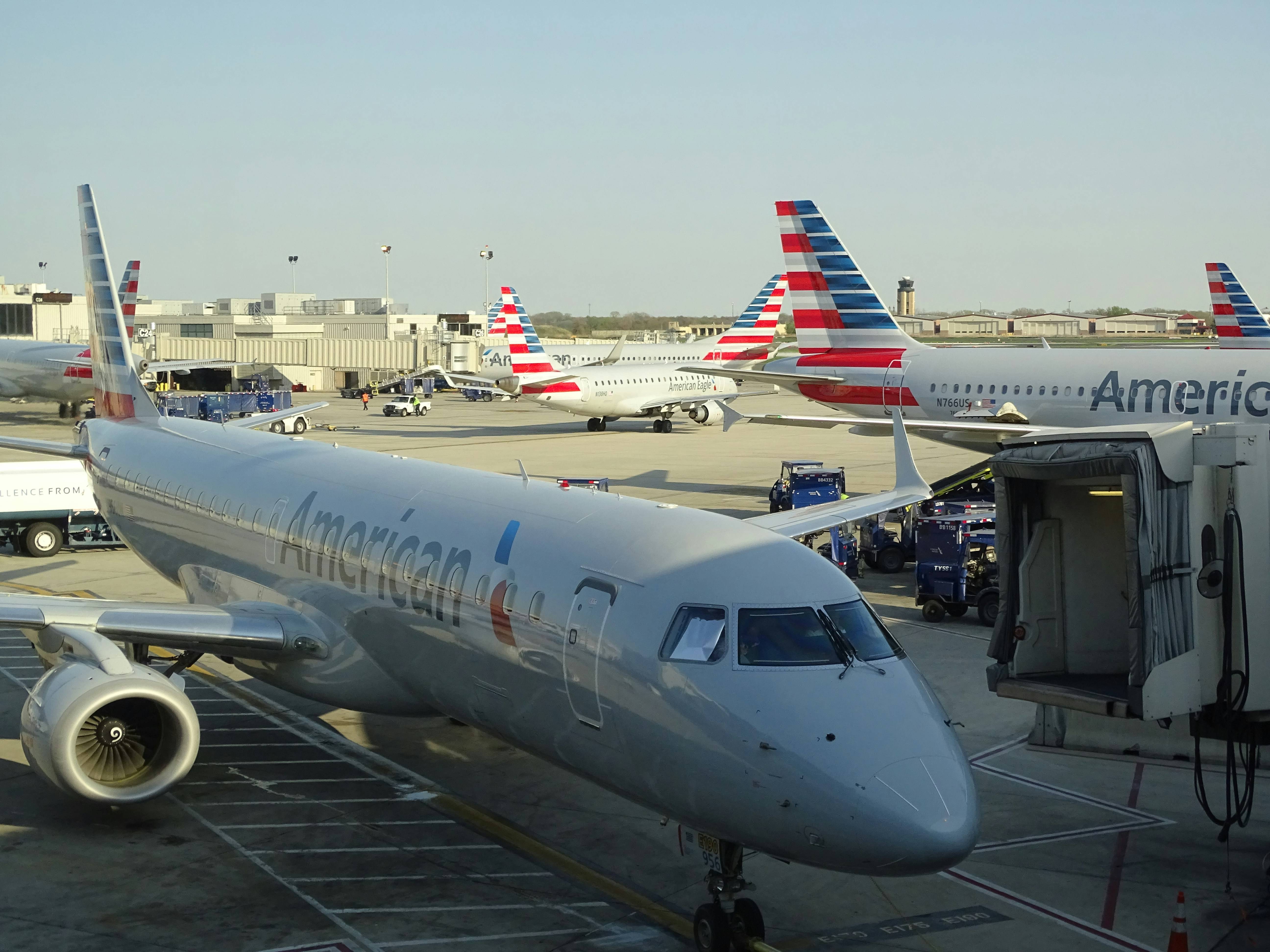Airline Hub Locations
As an aviation buff and frequent flyer, I've come to appreciate the intricacies of airline operations, and how they use specific airports as gateways (known as hubs) to connect multiple destinations to a central point. An airline hub is essentially the heart of an airline's geographic zone, where they funnel passengers onto connecting flights, ensuring we reach our intended destinations as smoothly as possible.
Like many frequent flyers, I often find myself navigating the hub-and-spoke system, a model that airlines use to streamline their operations. Hubs serve as central points where flights from different origins converge, allowing for easy transfers to a wide array of destinations. It’s efficient for the airlines, if not necessarily for passengers who must make a flight connection.
Most airlines have more than one hub, strategically located at some of the world’s busiest airports. These hubs aren't just passenger transfer points; they're also crucial for cargo operations, with many doubling as major freight centers. I’ve found that having a good understanding of these hubs (and where the airlines have them located) can make a significant difference in planning and enjoying my travels.
VIDEO:Ever wondered where major US airlines call home? This insightful video dives into the main hubs of American, Delta, United, and more, revealing the strategic bases where they station their crews and maintain their fleets. I found it fascinating to learn about the unique operational models of each airline, especially how Southwest Airlines breaks the mold with its point-to-point routes. If you're an aviation enthusiast or just curious about where your next flight might be coming from, this video is a must-watch. Click play to explore the bustling hubs and home bases of America's top carriers!
When I’m on a flight, I used to have a habit of checking out the airline route maps in the in-flight magazines (if you can find those anymore!). These maps are interesting to identify all the places you can fly from. So to dive into things deeper, below is a list of some major US and international carriers and their main hubs.
 American Airlines
American Airlines
American Airlines, one of the largest airlines in the world, has its main base at Dallas-Fort Worth International Airport in Texas. This hub is the epicenter of American's operations, and I’ve passed through it countless times. It’s incredibly convenient for connecting to a vast array of domestic and international destinations.
American Airlines operates from several major hubs, and I’ve had the pleasure of flying through most of them:
- New York LaGuardia Airport (LGA)
- New York John F. Kennedy International Airport (JFK)
- Philadelphia International Airport (PHL)
- Charlotte Douglas International Airport (CLT)
- Miami International Airport (MIA)
- Chicago O'Hare International Airport (ORD)
- Dallas-Ft. Worth International Airport (DFW)
- Los Angeles International Airport (LAX)
 United Airlines
United Airlines
United Airlines operates an impressive network of hubs across the United States. I’ve flown through many of them, and each has its own distinct vibe. The largest hubs, in Denver, Chicago, Newark, and Houston, are especially important for connecting flights.
United's key hubs include:
- Newark Liberty International Airport (EWR)
- Washington Dulles International Airport (IAD)
- Chicago O'Hare International Airport (ORD)
- Houston George Bush Intercontinental Airport (IAH)
- Denver International Airport (DEN)
- San Francisco International Airport (SFO)
- Los Angeles International Airport (LAX)
 Delta Airlines
Delta Airlines
Delta Airlines has one of the largest hubs in the world at Hartsfield-Jackson Atlanta International Airport (ATL). This is Delta’s main operational base, and as someone who frequently flies with Delta, I’ve gotten to know this hub quite well. Whether I’m heading out on a domestic trip or flying internationally, ATL is usually my starting point.
Delta also operates out of several other hubs, each with its own strengths:
- Salt Lake City (SLC)
- Atlanta (ATL)
- Minneapolis (MSP)
- Detroit (DTW)
- Boston Logan (BOS)
- New York (JFK)
- Los Angeles (LAX)
 JetBlue Airways
JetBlue Airways
JetBlue Airways’ primary hub is at John F. Kennedy International Airport (JFK) in New York City. I love flying with JetBlue, especially because their hubs are conveniently located for East Coast travel. JFK is the central hub, but JetBlue’s reach extends far beyond.
JetBlue operates from the following major hubs:
- Boston Logan International Airport (BOS)
- New York John F. Kennedy International Airport (JFK)
- Orlando International Airport (MCO)
- Ft. Lauderdale-Hollywood International Airport (FLL)
- Luis Muñoz Marín International Airport (SJU)
- Long Beach Airport (LGB)
 Air Canada
Air Canada
Air Canada, as Canada's largest airline, operates its primary hub out of Pearson International Airport in Toronto. I’ve flown with Air Canada several times, and their hubs are well-positioned to connect travelers across Canada and beyond.
Air Canada's hubs include:
- Vancouver International Airport (YVR)
- Calgary International Airport (YYC)
- Toronto Pearson International Airport (YYZ)
- Montréal–Pierre Elliott Trudeau International Airport (YUL)
 Alaska Airlines
Alaska Airlines
Alaska Airlines has a strong presence on the West Coast, and I’ve found their hubs to be incredibly convenient for regional travel. Whether you’re heading to the Pacific Northwest or beyond, Alaska’s hubs make it easy to get where you need to go.
Alaska Airlines' primary hubs are:
- Ted Stevens Anchorage International Airport (ANC)
- Seattle-Tacoma International Airport (SEA)
- Portland International Airport (PDX)
Alaska Airlines also operates hubs at:
- San Francisco International Airport (SFO)
- Los Angeles International Airport (LAX)
 Hawaiian Airlines
Hawaiian Airlines
Hawaiian Airlines operates primarily from its hub at Daniel K. Inouye International Airport in Honolulu, Hawaii. This hub is essential for connecting travelers to and from the Hawaiian Islands, as well as to key destinations across the Pacific.
Spirit Airlines
Spirit Airlines, known for its ultra-low-cost model, operates from several hubs across the United States. While Spirit's hubs aren't as extensive as those of the major carriers, they are strategically located to maximize coverage across key regions.
Spirit's primary hubs include:
- Fort Lauderdale-Hollywood International Airport (FLL)
- Orlando International Airport (MCO)
- Detroit Metropolitan Airport (DTW)
- McCarran International Airport, Las Vegas (LAS)
- Chicago O'Hare International Airport (ORD)
- Dallas/Fort Worth International Airport (DFW)
- Atlantic City International Airport (ACY)
Frontier Airlines
Frontier Airlines, another ultra-low-cost carrier, has a network of hubs that allow it to offer affordable flights to a wide range of destinations, particularly across the United States.
Frontier's main hubs include:
- Denver International Airport (DEN)
- Orlando International Airport (MCO)
- Las Vegas Harry Reid International Airport (LAS)
- Philadelphia International Airport (PHL)
British Airways
British Airways, one of the world's leading airlines, operates from its primary hub at London Heathrow Airport. This hub is crucial for BA's extensive network of international flights, connecting the UK to destinations around the globe.
British Airways operates primarily from the following hubs:
- London Heathrow Airport (LHR)
- London Gatwick Airport (LGW)
- London City Airport (LCY)
Lufthansa
Lufthansa, Germany's largest airline and one of the most recognized names in aviation, operates from several major hubs across Europe. These hubs are key to Lufthansa’s extensive international and domestic network.
Lufthansa’s main hubs include:
- Frankfurt Airport (FRA)
- Munich Airport (MUC)
- Vienna International Airport (VIE) - via Austrian Airlines
- Zurich Airport (ZRH) - via Swiss International Air Lines
Emirates
Emirates, based in Dubai, operates one of the largest and most advanced hubs in the world. Dubai International Airport serves as a critical connecting point for travelers flying between Europe, Asia, Africa, and beyond.
Emirates' primary hub:
- Dubai International Airport (DXB)
Cathay Pacific
Cathay Pacific, Hong Kong’s flagship carrier, operates from its hub at Hong Kong International Airport. This hub is pivotal for Cathay’s extensive network, particularly across Asia and to destinations worldwide.
Cathay Pacific's primary hub:
- Hong Kong International Airport (HKG)
Air France
Air France, the national carrier of France, operates from several hubs in France, with its main hub at Charles de Gaulle Airport in Paris. These hubs are essential for Air France’s operations, connecting France to destinations across the globe.
Air France's hubs include:
- Paris Charles de Gaulle Airport (CDG)
- Paris Orly Airport (ORY)
EasyJet
EasyJet, one of Europe’s leading low-cost carriers, operates from a network of hubs across Europe. These hubs enable EasyJet to offer affordable flights to a wide range of destinations.
EasyJet's main hubs include:
- London Gatwick Airport (LGW)
- London Luton Airport (LTN)
- Milan Malpensa Airport (MXP)
- Geneva Airport (GVA)
Ryanair
Ryanair, Europe’s largest low-cost carrier, operates from a vast network of hubs across the continent. These hubs support Ryanair’s extensive operations, connecting hundreds of destinations.
Ryanair's main hubs include:
- Dublin Airport (DUB)
- London Stansted Airport (STN)
- Milan Bergamo Airport (BGY)
- Madrid Barajas Airport (MAD)
- Frankfurt Hahn Airport (HHN)
READ MORE: Info & help on specific airports
FAQ: Airline Hub Locations
Find more help here for your journey through the airport



